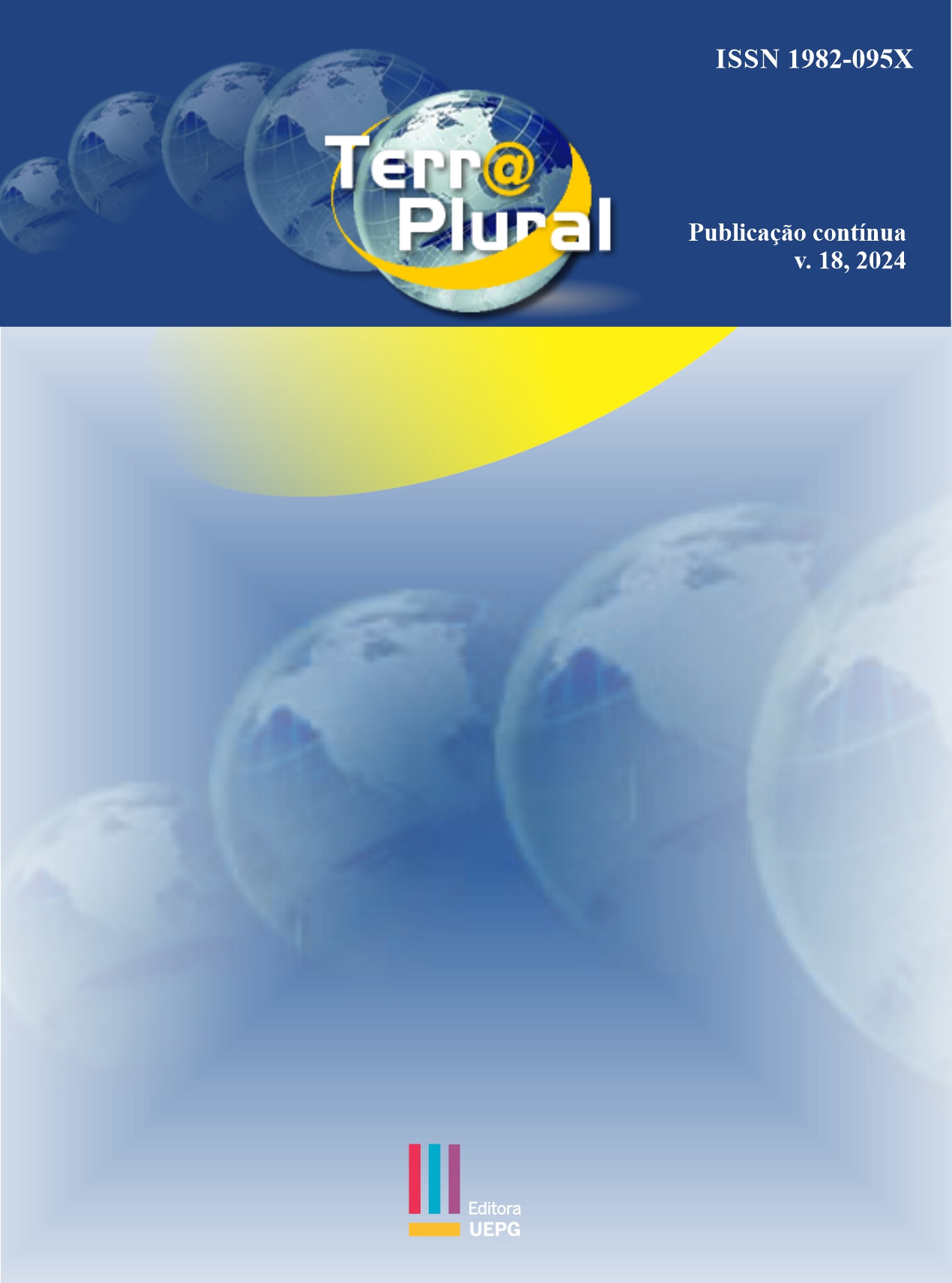Diagnosis of urban afforestation in Vila Brasília, Serra do Mel, RN Brazil
DOI:
https://doi.org/10.5212/TerraPlural.v.18.22189.005Keywords:
Biodiversity, Vegetation cover, Floristic composition, Plant species, Urban environmental planningAbstract
The late and accelerated urbanization initiated in the 20th century has triggered social and environmental impacts in the cities, caused by soil paving, suppression of arboreal vegetation, heat islands and loss of floristic biodiversity. The present work aims to carry out a diagnosis and promote a discussion that subsidizes the planning of urban afforestation in Vila Brasília, in the city of Serra do Mel, located in the state of Rio Grande do Norte. The methodology adopted consisted of an inventory of the local floristic composition. The plants were identified by means of specific literature, and the unidentified species were photographed and sent to specialists. The floristic list was classified based on the APG IV classification. It was found that 62,5% of the species are exotic, with a predominance of the species nim (Azadirachta indica), with a percentage of 53%, and the botanical family Fabaceae, representing 20% of the inventoried families, besides the presence of tree species with drastic pruning, paved areas without afforestation, and an expressive number of seedlings. It is required, therefore, that priority be given to native species, in addition to the need to take into account the species and place of planting and maintenance of the afforestation as a whole in the planning.
Downloads
Downloads
Published
How to Cite
Issue
Section
License
Copyright (c) 2024 Maria Dayanne Vieira, Lucas Emanuel Marinheiro de Oliveira, Luiz Tavernard de Souza Neto, Diego Nathan do Nascimento Souza

This work is licensed under a Creative Commons Attribution-NonCommercial-NoDerivatives 4.0 International License.
Revista Terr@ Plural will obtain the auctorial rights for all published texts. This also implies that the text can be published anywhere in the world, including all rights on renewal, expansion, and dissemination of the contribution, as well as other subsidiary rights. The authors get permission to publish the contribution in other media, printed or digital, it may be in Portuguese or translation since the publication is credited to Revista Terr@ Plural. It allows the self-archiving of published articles in institutional repositories, thematic repositories, or personal web pages in the pdf version downloaded from the journal's site.















